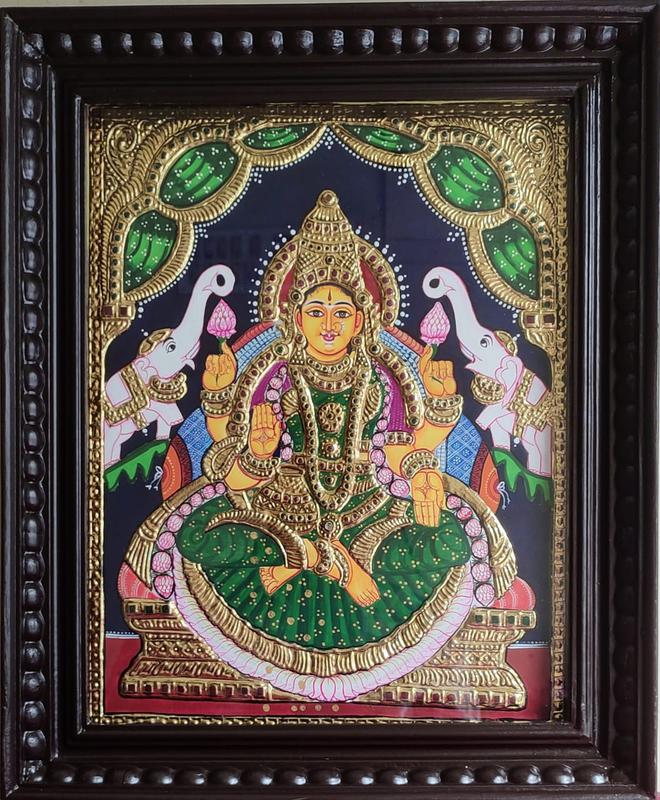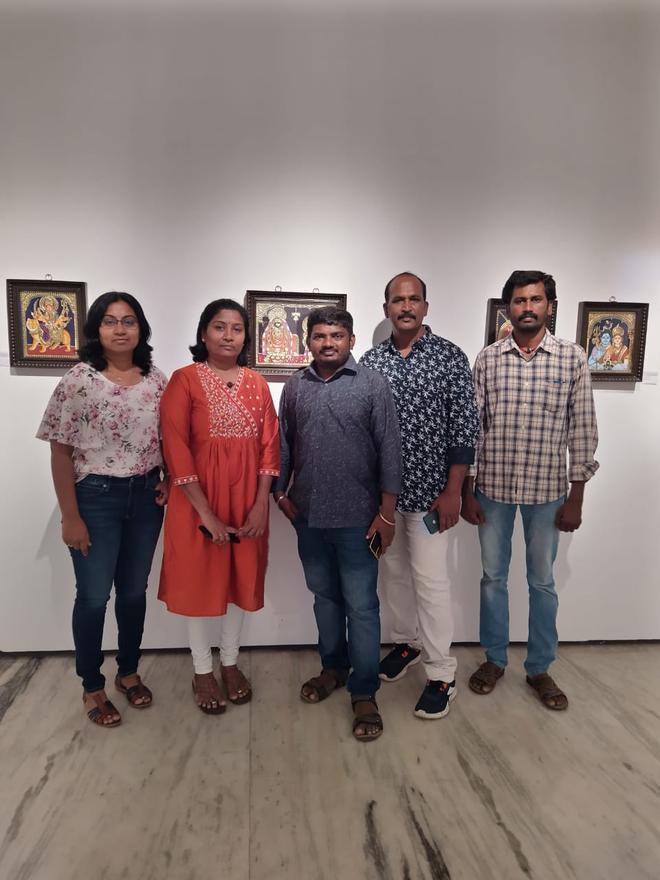“A Tanjore painting has to be treasured, not just because it contains gold, but also because of its invaluable heritage,” says Bharani Elangovan, a Tanjore painting artist. “The artform traces its history back to the time of the Chola empire in the 16th century. Carrying forward the tradition is an honour.”
Bharani is part of a Tanjore painting exhibition organised by the Kerala Lalithakala Akademi and South Zone Cultural Centre, Thanjavur, at the Durbar Hall Art Gallery in Kochi.
Along with four other artists, Bharani has been engaging with visitors at the gallery, explaining the history and craft of Tanjore paintings. Her husband, artist K Elangovan, is also part of the team.
Joining the conversation, Bharani’s sister Bharathi Senthilvelan highlights that Tanjore paintings mostly feature Gods, Goddesses and divine beings. “Some artists experiment with modern themes too,” she adds. “However, raw materials have changed over time. In the ancient period, artists used actual precious stones and gold, and the works were framed in teak. Today, instead of diamonds and sapphires, artists use semi-precious stones such as kundan stones and American diamonds,” she explains.

Tanjore paintings often go beyond the realm of art. “They are revered,” says Bharathi, who has displayed a series of acrylic on canvas works inspired by Tanjore paintings.. “Most Hindu prayer rooms in South India would have a Tanjore painting.”
The journey of a Tanjore painting is fascinating, say the artists. “It takes about 20 days to complete a standard-size painting of about 15’’x12’’ proportions,” says Vasudevan A, an artist who hails from Salem. “The first step is preparing the plywood base. The process takes three to four days. The artist then traces the painting and applies muck paste, a mixture of chalk powder and Arabic gum. This is done in order to give the painting a 3D effect. It is then inlaid with stones and gold foil, on which the artist employs the necessary filigree work. The painting is completed in poster colours. “

Bharani chips in that, even today, 22 and 24 karat gold foils are used to embellish the paintings.
There are certain standard colours used in Tanjore paintings — Prussian blue, crimson, green and pink. “In the olden times, artists used only natural colours,” says A Murthy, an artist from Salem. “For ease of use, most of the artists today use poster colours.”
Many of these artists accept orders for individual works, too. “We do a lot of customisation these days,” says Bharathi.
In addition to the usual paintings of Lord Krishna, various forms of the Goddesses, Lord Balaji and Lord Ganesha, the exhibition also includes Tanjore paintings of Jesus Christ and Shirdi Sai Baba. Paintings of birds, elephants and Kathakali, too, are on show.
The show is on till December 17 at the Durbar Hall Art Gallery in Kochi.







